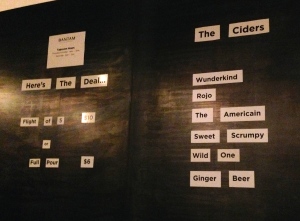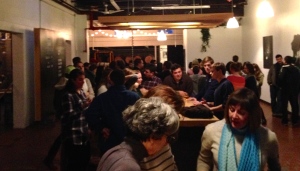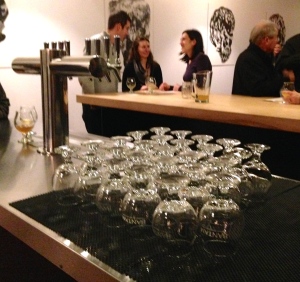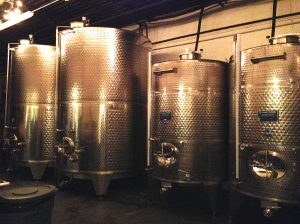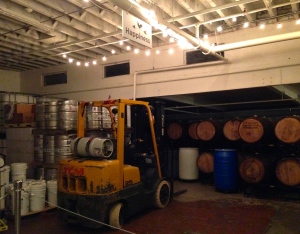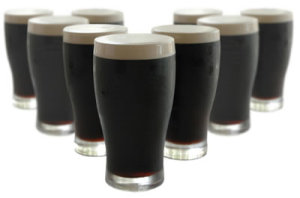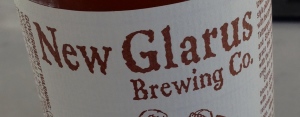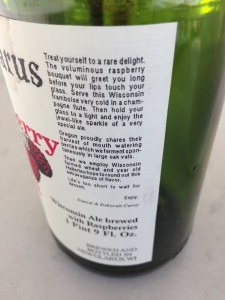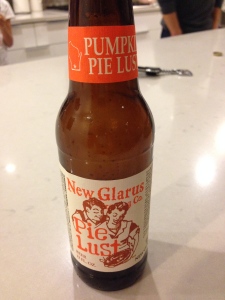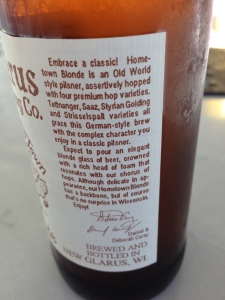What fun, local activity does a Boston craft beer lover suggest to a visiting New Yorker with a gluten allergy? In my case, I insisted that my friend Nadia accompany me on a pilgrimage to the new(ish) Bantam Cider tasting room in Somerville. A fan since early 2012 when they launched Wunderkind, I was excited to sample the co-owners’ (Dana Masterpolo and Michelle da Silva) latest experimental creations.
The historic Somerville building located just outside Union Square contains both The Tap Room and Bantam’s production facility, and features an open layout so that each is visible to the other. Operating on the site of the former White Rose Baking Company, Bantam remains true to the building’s industrial roots: just about everything is made of concrete, steel, or wood. Underneath a suspended ceiling of spaced wooden beams stands a large, unpretentious kegerator with 8 taps and rows of glasses lining its shiny surface. People gather at long, communal tables placed around the room, holding glasses of cider and reaching for mason jars full of pretzel sticks.
Joined by Nadia’s friend Gretchen, we each ordered $10 tasting flights of five cider varieties, and watched the work in the fermentation room from our spot at a communal table. Proudly on display are two 100 barrel fermenters that doubled Bantam’s production capacity earlier this year, alongside two smaller ones. In an adjoining room, we could see racks of barrels used for aging cider, and stacks of kegs and other production equipment. Lights hanging from exposed piping in the ceiling created a welcoming glow that softened the otherwise industrial space.
In addition to Bantam’s flagship Wunderkind, and its tart cherry sister Rojo, the flights offered more experimental ciders, each made with unique ingredients and yeasts. For example, the “Dry-Hopped” variety tasted the most like a beer, incorporating ale yeast and Cascade hops. “The American,” a “big”-tasting cider, reminded me of the holidays, with flavoring from green cardamom, clove, cinnamon, and coriander spices. Our crowd favorite was the “Wild One,” brewed with vinegar, mustard, and wild yeast. We agreed that Wild One is the cider version of the current beer trend toward those funky, sour, Belgian tastes. Once we completed our flights, we each ordered a $6 full pour from the menu board.
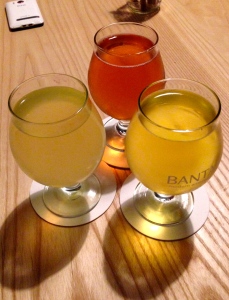
Bantam seems to be keeping its options open for its ~5000 sq. foot space. There’s been talk of additional tables and seating, a full bar, and even a restaurant, but for now the space continues to evolve based on the current experience and feedback. It seems to me that this is the best way to develop the space – alongside the cider it produces.


